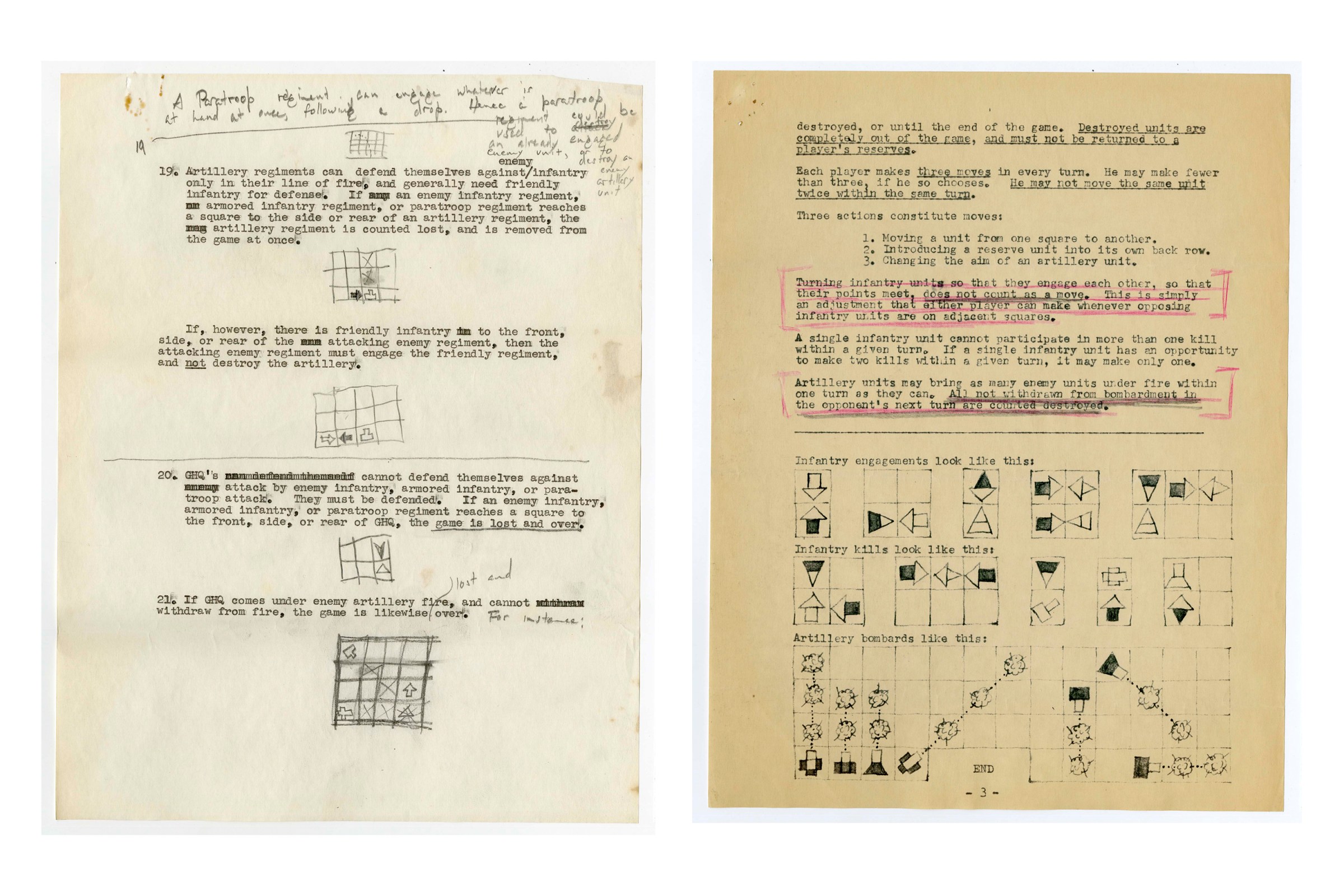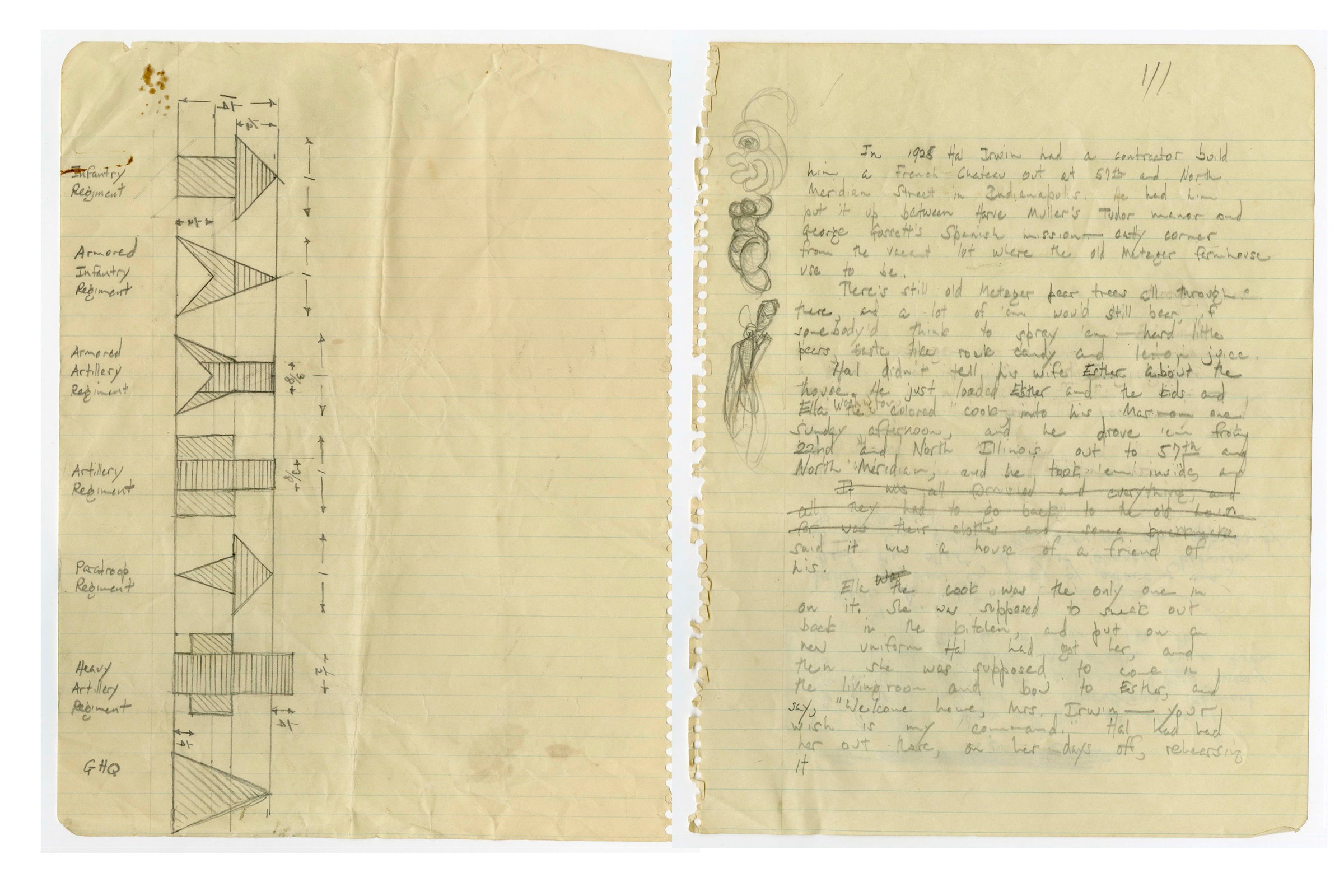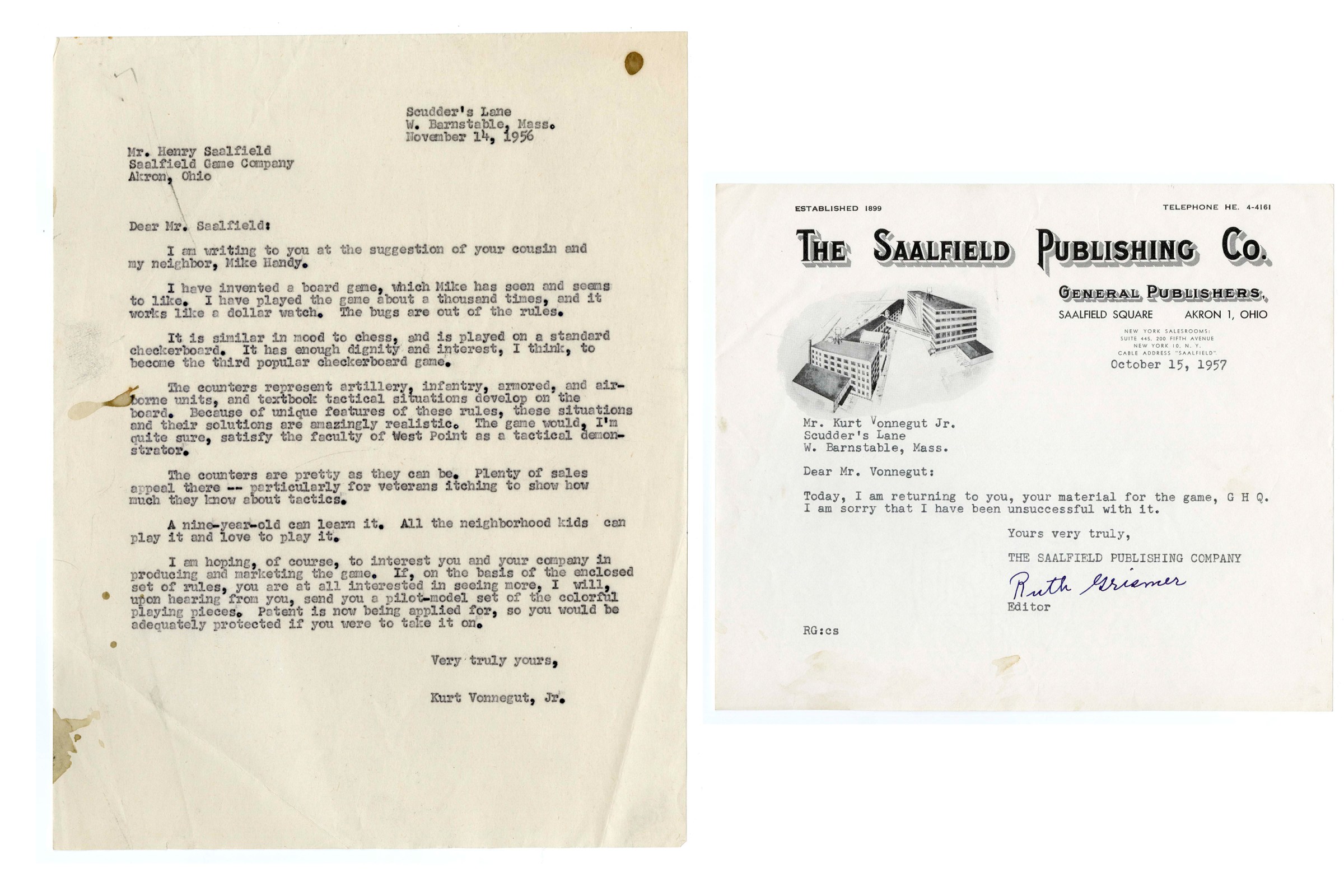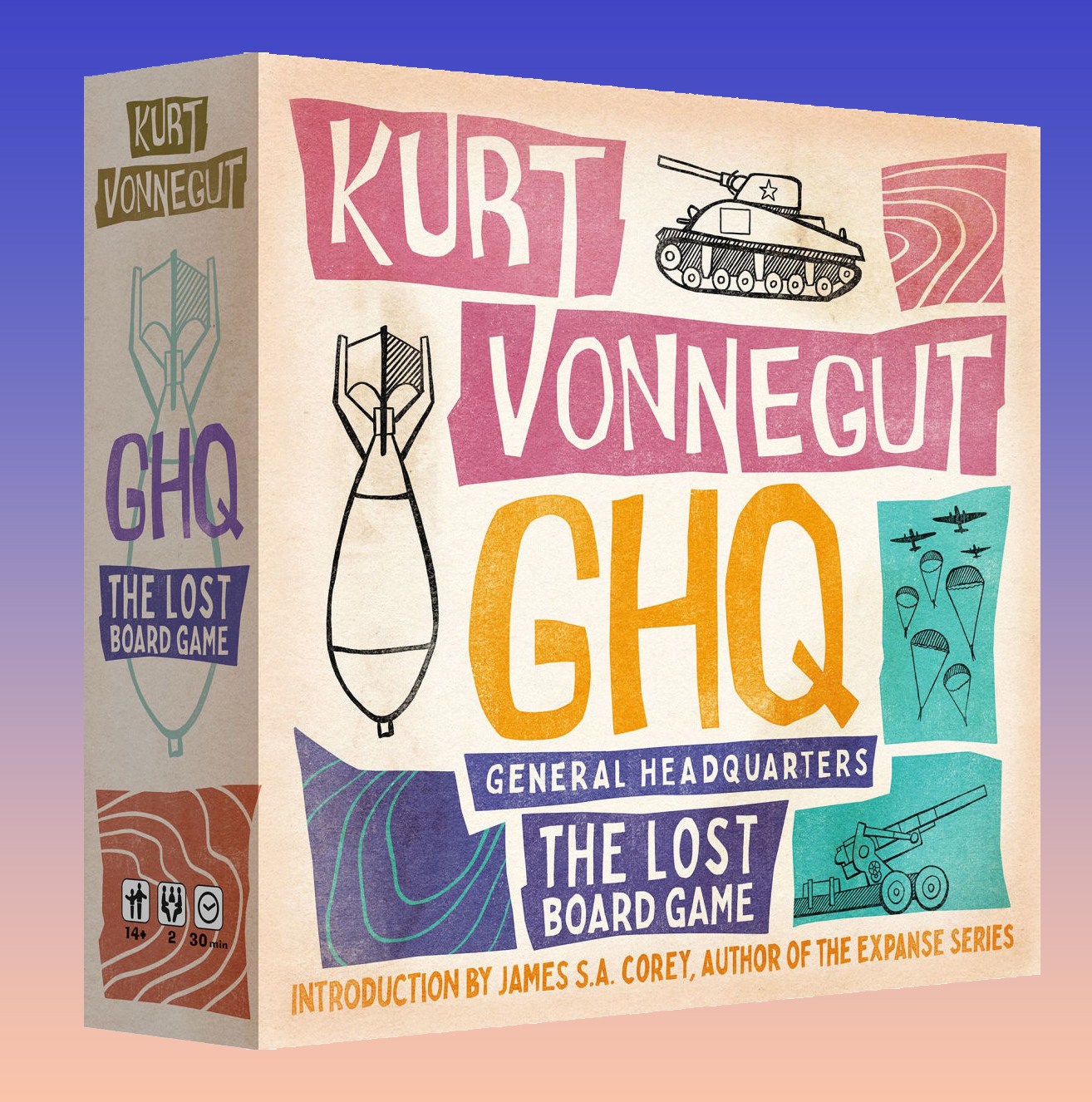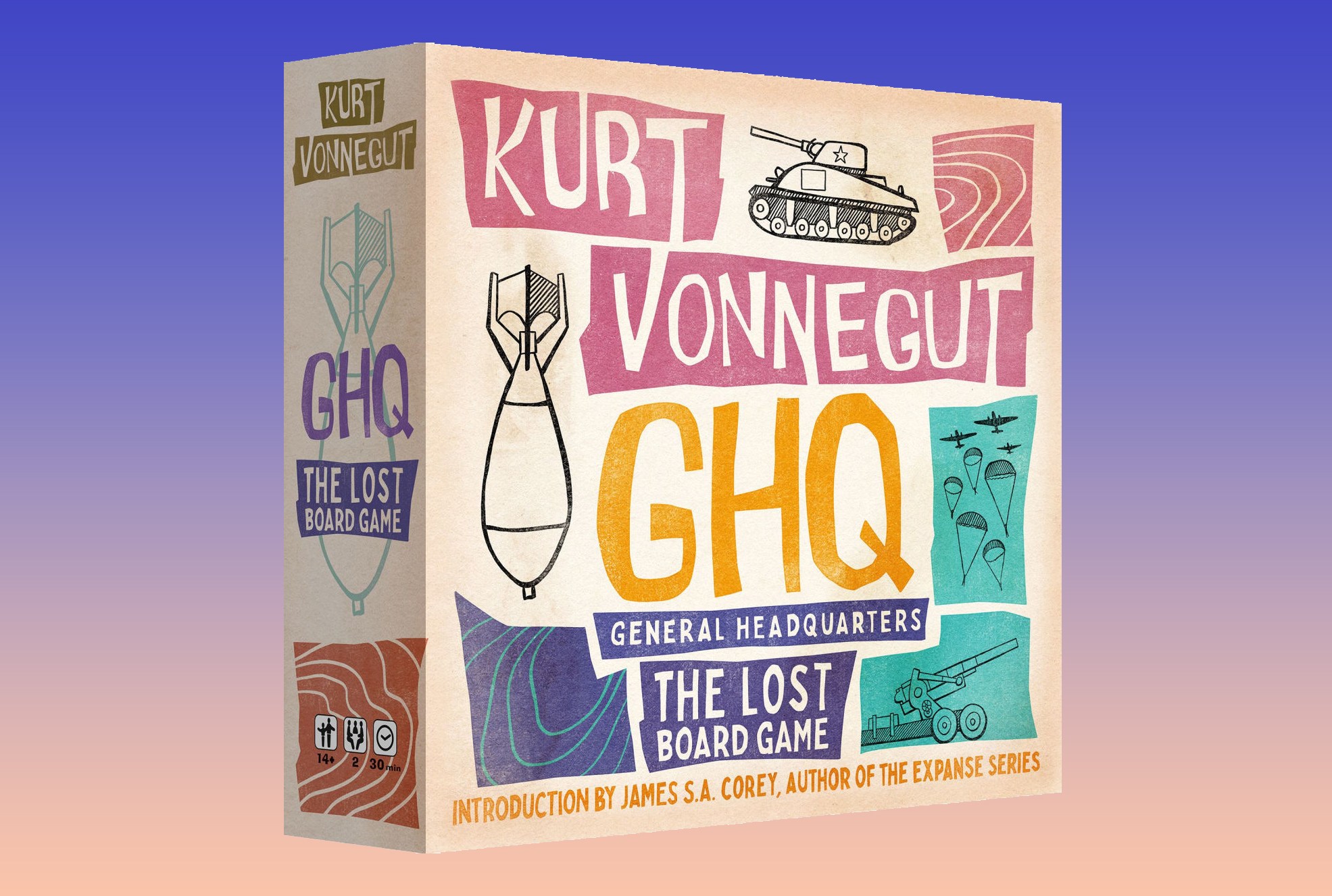What if Kurt Vonnegut’s Lost Board Game had actually been published in the 1950s?
Fans of literature probably know Kurt Vonnegut from the novel Slaughterhouse-Five. The staunchly anti-war book first resonated with readers during the Vietnam War era, and later became a staple of high school curricula around the world. When Vonnegut died in 2007 at the age of 84, he was widely recognized as one of the greatest American novelists of all time. But would you believe he was also an accomplished game designer?
In 1956, after the lukewarm reception of his first novel, Player pianoVonnegut was one of 16 million other World War II veterans who struggled to put food on the table. His solution to making money at the time was a board game called GHQwhich took his knowledge of modern combined arms warfare and turned it into a simple game played on an eight by eight grid. Vonnegut relentlessly pitched the game to publishers throughout the year, according to game designer and NYU faculty member Geoff Engelsteinwho recently found those letters in the archives of Indiana University. But the real treasure was an original set of typewritten lines, complete with Vonnegut’s own notes in the margins.
With permission from the Vonnegut estate, Engelstein tells Polygon he has cleaned up the original lines a little and buffed out the dents in the walls. GHQ‘s endgame, and provided some decent art and graphic design. Now you can see the finished product, titled Kurt Vonnegut’s GHQ: The Lost Board Gameat your local Barnes & Noble – almost 70 years after it was founded.
In a recent interview with Polygon, Engelstein still seemed baffled that his research had stumbled upon the game in the first place. But what really fascinates him is how diametrically opposed he is to Vonnegut’s later work GHQ really and truly.
“Sirens of Titan was written at the same time he was working on this game,” Engelstein told Polygon. “In Sirens of Titanthere is a Martian army that is really a joke. No one in the military, (not) even the officers, is really in charge of what happens. They are all mind controlled. No one has true free will. They’re just set up as pawns to be sacrificed, to make the Earth come together, sort of Watchmen-style.”
While The sirens of Titan was a deeply cynical view of war, GHQ runs deep oncynical. In fact, his own pitch letters note that Vonnegut was thinking GHQ would be an excellent training tool for future military leaders, including cadets at West Point. How are modern audiences to reconcile the words of the same man who wrote? Cat’s cradle?
“There are no definitive answers to these questions,” Engelstein said. ‘He didn’t write about it. No one asked him about it while he was alive, so we’ll never know.”
For board game fans, the questions go in a slightly different direction: What if Vonnegut’s pitches of the 1950s had been successful?
Engelstein reasons that if Vonnegut had pitched the game in ’56, it would have taken at least a few years for the game to be produced and ultimately published. That window from 1958-1959 would have been installed GHQ in rare company – 1958 was the year Tactic 2 was published, a game that would inspire the Squad Leader series of card-and-token tactical wargames and eventually video game genres such as turn-based and real-time strategy. Just a year later, the industry would see the release of Risk And Diplomacythe forerunners of the modern 4X genre and two successful franchises in their own right that remain popular to this day.
“Three games that had a huge influence, all war-related, that came out in that period of a year, two years,” Engelstein mused. “So if GHQ also came out in that period? There is clearly something in the air at that moment.”
Of course, we’ll never know how these counterfactuals would have played out, but anyway GHQ is finally available to the public. That’s great news for one of the original playtesters, Kurt Vonnegut’s son Mark Vonnegut, who is now 77. Engelstein said his input was invaluable in bringing the game to life.
“The success of Slaughterhouse-Five and the other novels are nice enough,” Vonnegut’s son recently wrote to Engelstein in an email, “but I do believe that somehow he is looking from somewhere and that the success of GHQ will be a greater and pure unadulterated pleasure. (…) He was discouraged about his writing at the time, but had unwavering confidence in it GHQ would succeed.”
You can find Kurt Vonnegut’s GHQ: The Lost Board Gamealong with a special forward from author James SA Corey, exclusively at Barnes & Noble.

